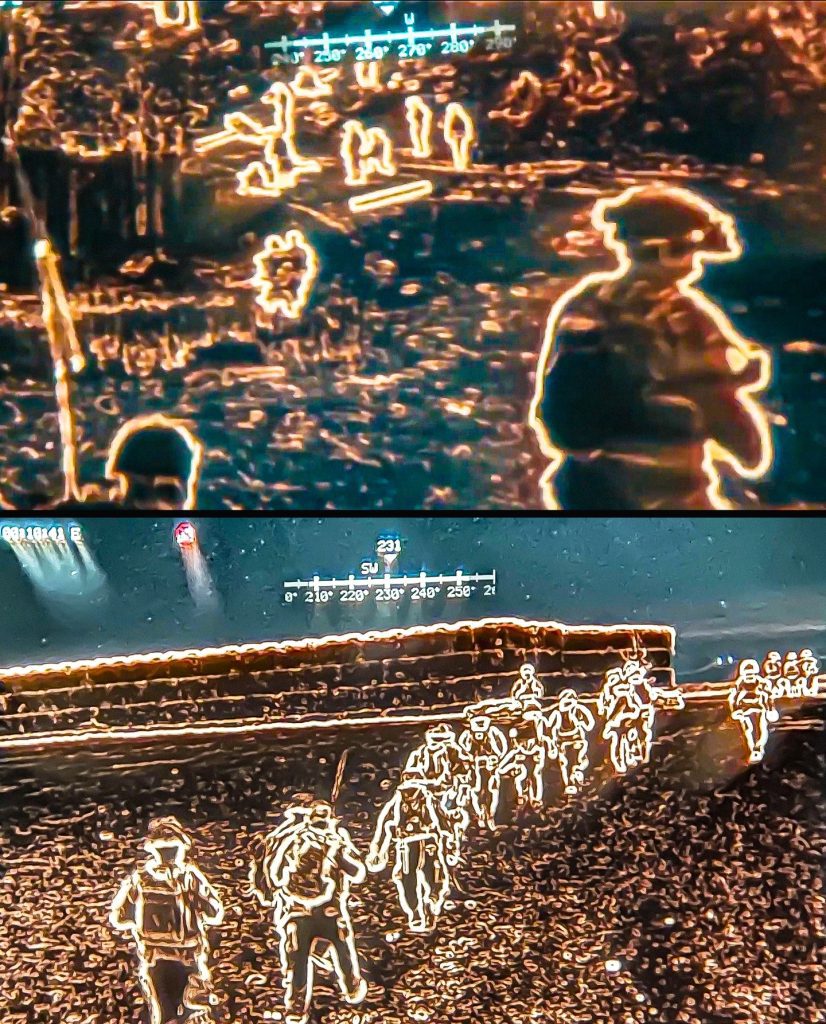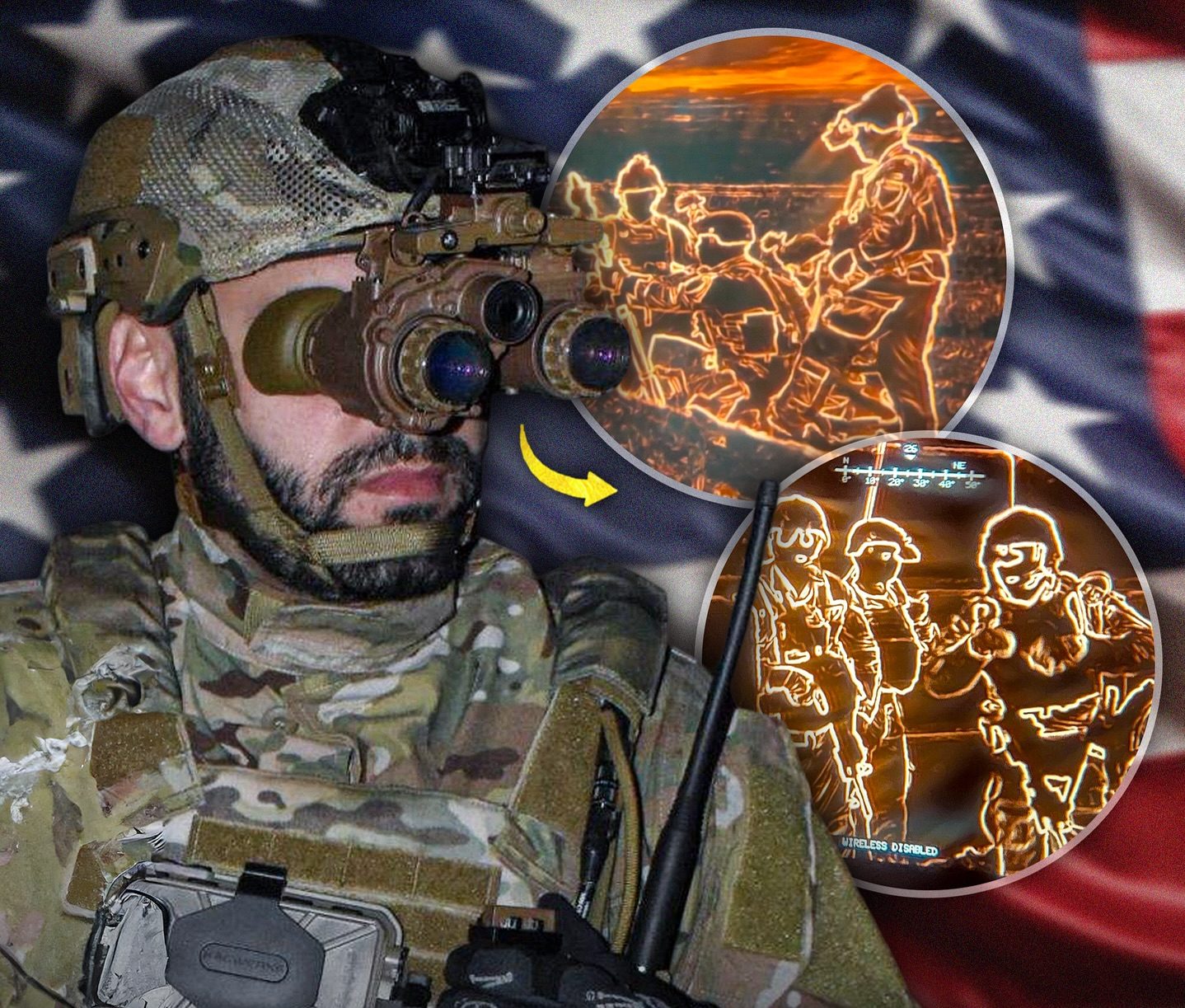How US Soldiers See the Battlefield Using Enhanced Night Vision Goggles
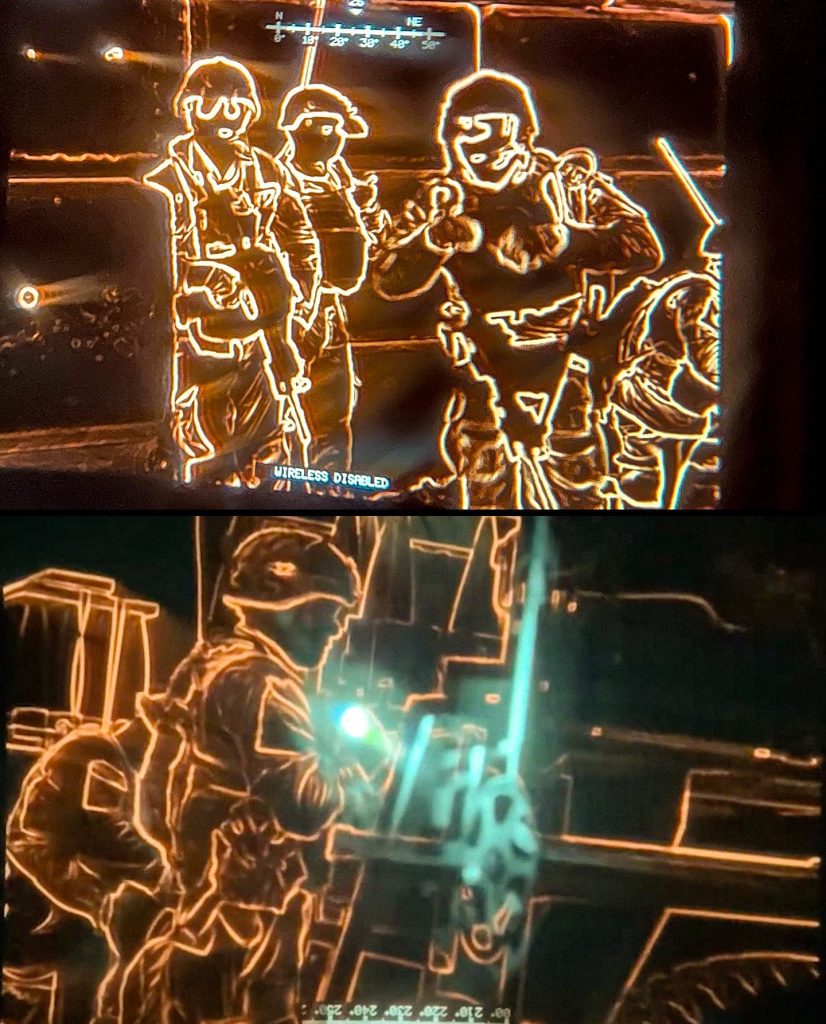
There’s something surreal about watching soldiers move through complete darkness as if they’re walking in broad daylight. It almost feels like science fiction, yet it’s real, and it’s happening now on the modern battlefield. The technology behind this night vision revolution is the Enhanced Night Vision Goggle-Binocular, or ENVG-B, and once you see what these goggles can do, you realize we’ve stepped into a new age of warfare.
Gone are the days of grainy green video and guesswork in the shadows. The ENVG-B doesn’t just amplify light — it combines thermal imaging and white phosphor night vision to create a world where enemies are outlined in blazing clarity, landscapes are fully readable, and every move is tracked with almost supernatural awareness. Imagine walking into pitch black terrain and suddenly being able to see heat signatures, detailed outlines of your fellow soldiers, and the terrain ahead like it’s lit up in neon.
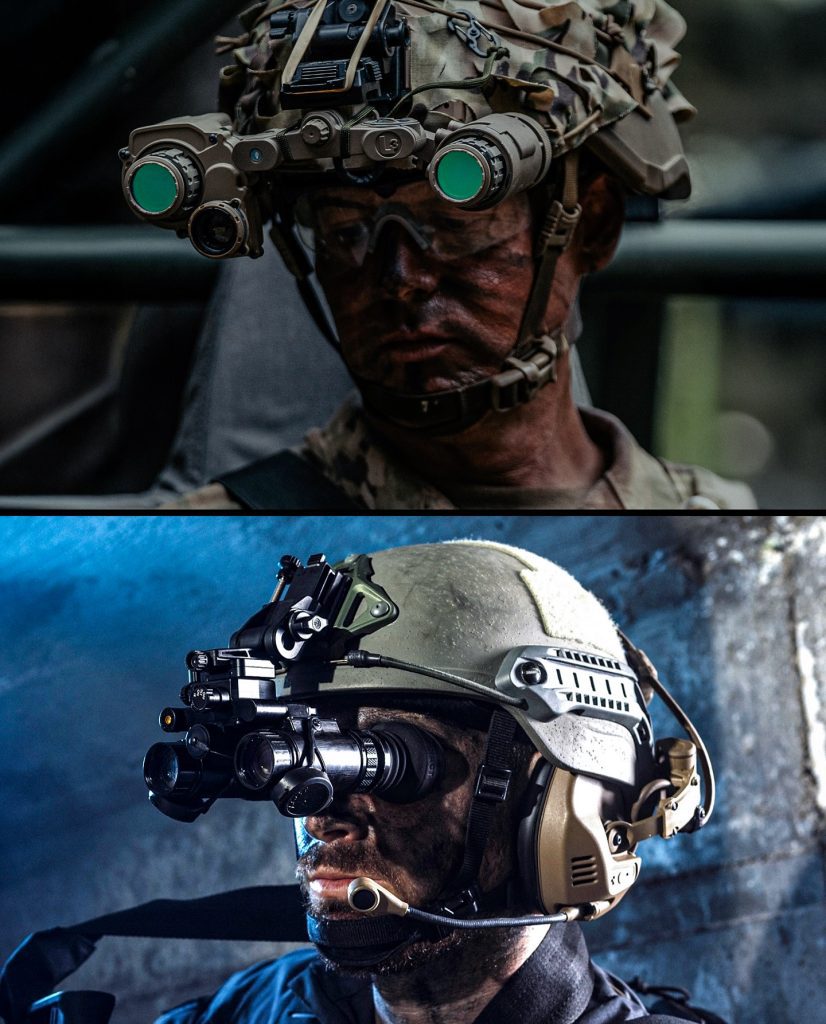
It’s eerie. It’s powerful. And it’s deadly effective.
This isn’t just about seeing better in the dark. These goggles connect directly to a soldier’s weapon optics, which means what they see through their rifle is integrated into their headset. That means no more switching between scopes or lifting goggles to aim. Soldiers can see where they’re aiming without ever breaking focus. They can tag targets, identify threats, and shoot faster, with more accuracy, even when visibility is zero.
But what’s most mind-blowing is that the ENVG-B isn’t just a solo tool — it’s networked. Multiple soldiers can share visual data in real-time. A soldier can see what his teammate sees, even from a distance. It’s like linking minds on the battlefield, sharing sight lines and battlefield awareness instantly. That’s an enormous tactical advantage, especially in situations where speed and coordination mean survival.
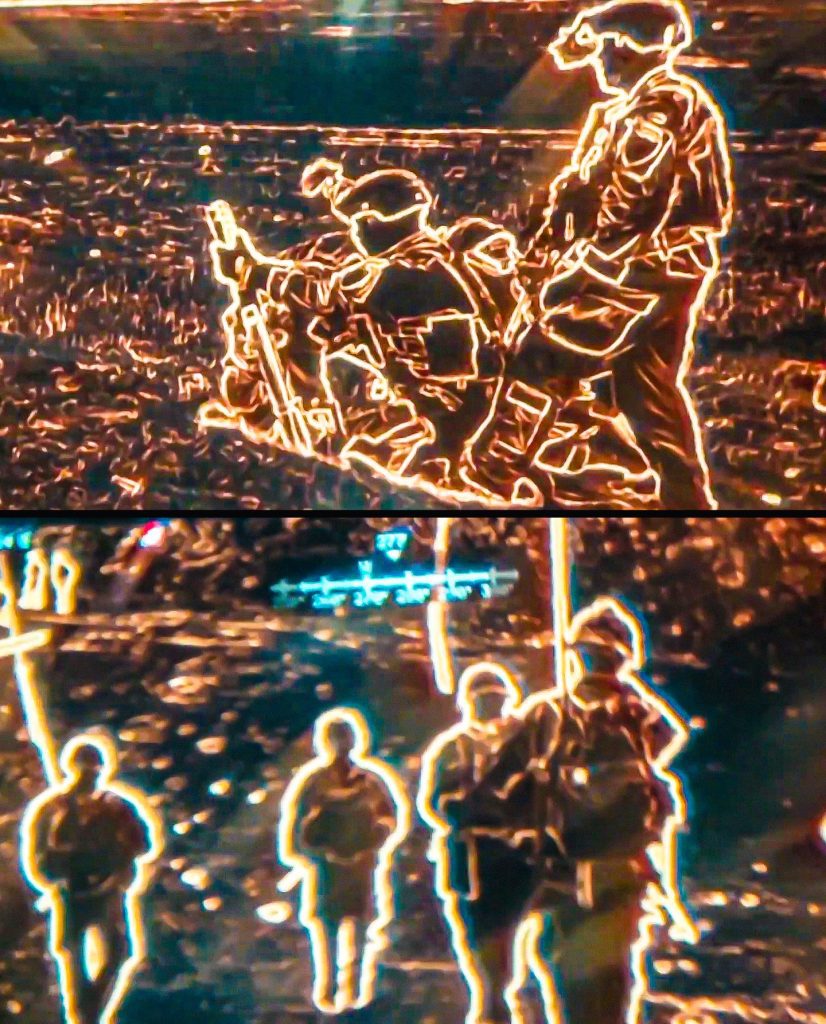
What makes this even more impressive is how intuitive it all feels. Soldiers aren’t getting overloaded with tech. Instead, they’re being given tools that make their jobs easier and safer. The ENVG-B is lightweight, fits right onto their helmet, and integrates with other battlefield systems like the Nett Warrior platform, which connects GPS, mission data, and communications. All of this is done in real-time, and most of it is hands-free.
The visuals coming from the ENVG-B are striking. We’re talking about soldiers glowing like golden silhouettes against blackened terrain. Vehicles outlined in thermal heat. Friendlies marked clearly. Even the texture of the ground can be seen in such detail that it helps troops avoid traps, ambushes, or dangerous terrain. It’s not just about firepower anymore — it’s about awareness, intelligence, and speed.
The U.S. Army knows how transformative this is, which is why they’re putting their money where their strategy is. In early 2025, the Army awarded a massive $263 million contract to bring these goggles into the field at scale. This isn’t experimental tech anymore. This is front-line standard.
And it’s not hard to see why. In close-quarters combat, where seconds decide who lives or dies, being able to see clearly while your opponent fumbles in the dark is game-changing. In open-field engagements, thermal detection helps spot distant movement long before the naked eye can detect it. And in urban warfare — perhaps the most complex battlefield — the ability to scan through shadows and walls of darkness gives soldiers unmatched dominance.
It also saves lives.
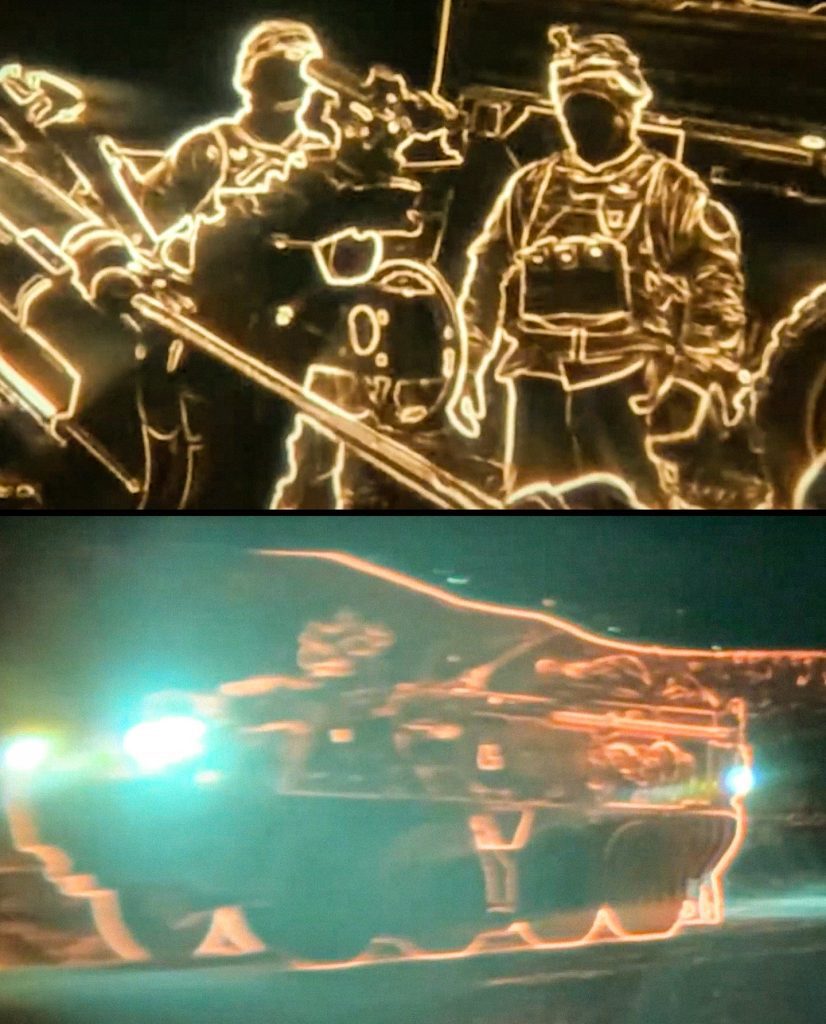
Troops can spot civilians, avoid friendly fire, and move with confidence instead of hesitation. It means better decisions, fewer mistakes, and stronger coordination. And the mental boost of knowing you can see — truly see — in any situation? That kind of confidence changes how soldiers fight.
Some of the soldiers who’ve used it say it’s like living inside a video game HUD. Everything you need is right there. Visual overlays. Target indicators. A battlefield that responds to you and reveals itself layer by layer. It’s technology that once felt futuristic but is now becoming routine in daily operations.
Of course, with such advanced tech, the enemy is always watching too — and adapting. Which is why this is just the beginning. The Army is already working on the next-gen version that will include augmented reality, even more precision targeting, and smarter battlefield integration. It won’t be long before these systems can analyze threats and offer suggestions in real time — turning soldiers into super-informed decision-makers.
There’s something poetic about the way these goggles light up the battlefield. It’s a reminder that in the chaos of war, clarity is everything. You can’t always control what’s coming, but if you can see it before it hits, you’ve already shifted the odds in your favor. That’s what the ENVG-B offers — a tactical clarity that turns confusion into control, darkness into daylight.
And for the soldier on the ground, that means coming home.
